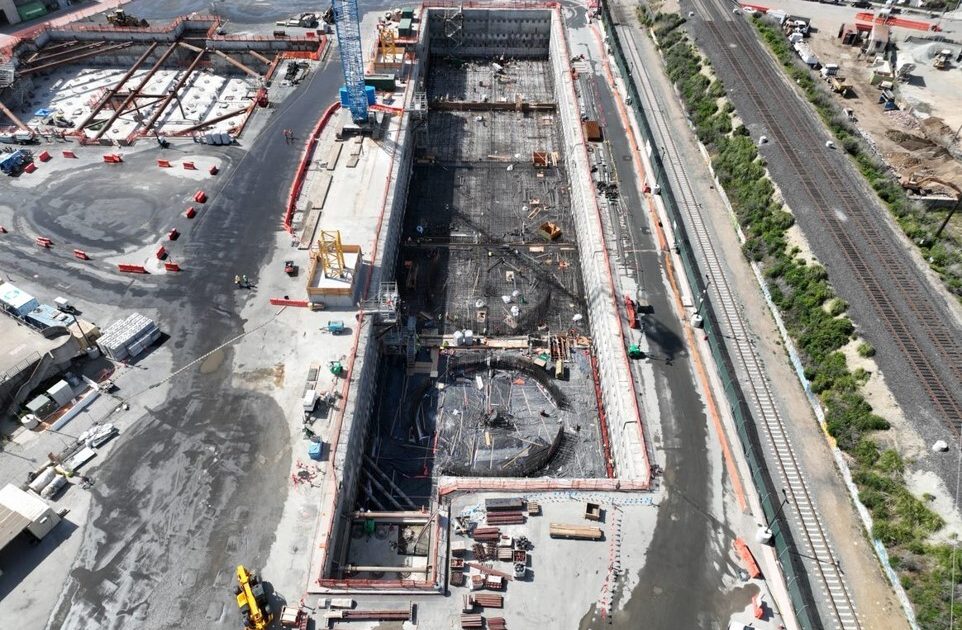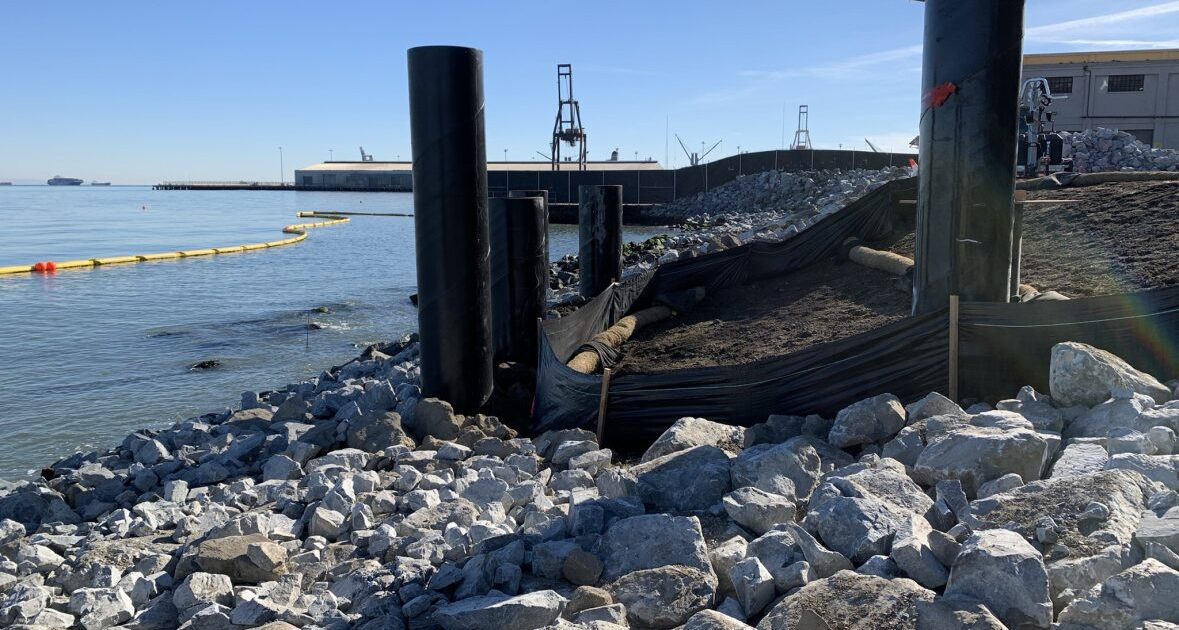The Potrero Power Station mixed-use development project is located on the central waterfront in San Francisco in the Dogpatch neighborhood. The project site is located on the grounds of a former Pacific Gas and Electric (PG&E) power plant. While this power plant served the city’s power needs for over 100 years, the community came together to envision a new future for this stretch of the waterfront and the power plant was decommissioned in 2011. The site was entitled with unanimous approval in 2020 to include up to 1.6 million square feet (sf) of offices and/or life science, approximately 2,600 housing units, a 240-key hotel, 100,000 sf of retail, 50,000 sf of community facilities, and 7 acres of parks and open space. The project incorporates sea-level-rise adaptation strategies including raising grades.

ENGEO is the geotechnical engineer for the Power Station project. Our work has included preparing design-level geotechnical recommendations for the streets and infrastructure, future buildings, retrofit of existing buildings and facilities, a new recreation dock, and ground improvement along the shoreline to provide seismic resiliency to the development. Our proposed seismic stabilization for the shoreline consisted of shear panels of improved ground, oriented perpendicular to the shoreline to resist slope movement. We recommended that deep soil mixing (DSM) be used as the most economical stabilization solution. We performed initial dynamic numerical modeling to prepare a bridging document for design-builders to use for bidding. We worked closely with the developer, California Barrel Company, to select a qualified contractor to complete this work. Ultimately, Keller North America (Keller) was selected and completed this work in 2022. We worked closely with Keller during their design and construction to confirm that the DSM would achieve the desired performance.

The subsurface conditions at the site present a complex geotechnical landscape, with variations between areas inland and bayward of the historical shoreline. Challenges arise from the diverse composition, ranging from artificial fill over bedrock to Young Bay Mud (YBM) and other geological layers. Both the artificial fill and YBM pose distinct geotechnical challenges, including liquefaction potential, consolidation settlement, and susceptibility to slope deformation. Moreover, given the high seismicity of the region, seismic stability becomes a primary concern. Initial analyses revealed potential shear-induced deformation under Maximum Considered Earthquake (MCE) conditions, posing a significant hazard to the proposed development.
In navigating the complexities of subsurface conditions and seismic risks, the ENGEO team’s proactive approach and mitigation measures provide for the resilience of the shoreline and the success of the proposed development. The identified challenges have been met with strategic solutions, laying the groundwork for a resilient and sustainable project in the face of geotechnical complexities and seismic uncertainties.
This project was featured in an article in the American Society of Civil Engineers Geo-Institute’s GEOSTRATA magazine. Please read more about the feature here: Geostrata – June/July 2023 – Soil Mix Seismic Fix (readgeo.com)